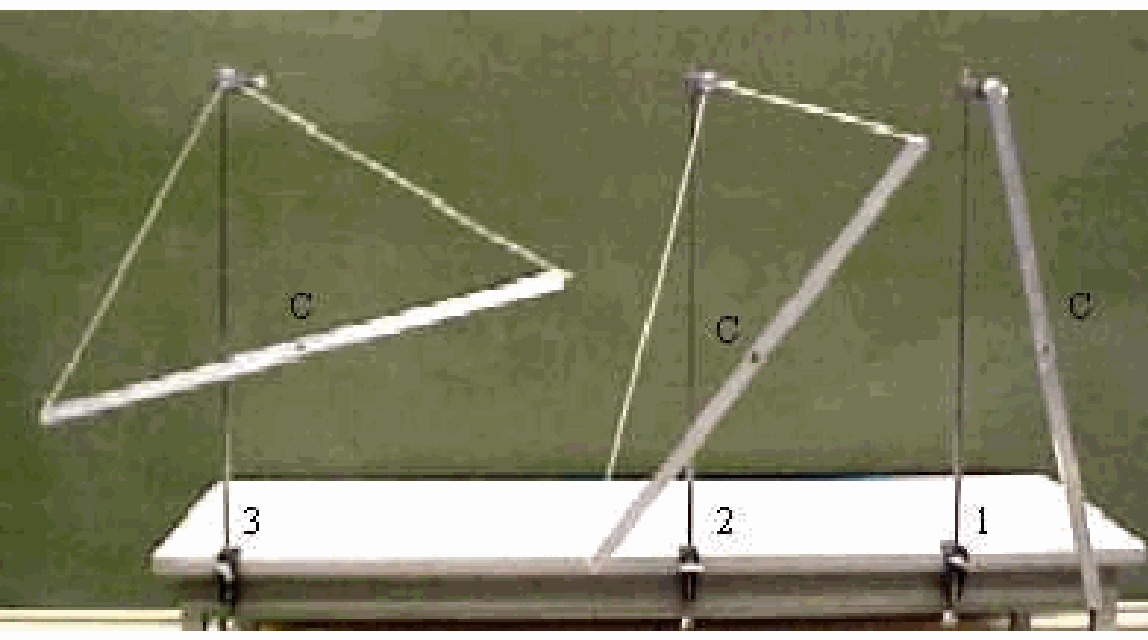05 Pirouette#
Aim#
To show an example of conservation of angular momentum, and the effect of the moment of inertia on rotational movement.
Subjects#
1Q10 (Momentum of Inertia)
1Q40 (Conservation of Angular Momentum)
Diagram#

Fig. 197 .#
Equipment#
Swivel chair
2 masses, \(1 \mathrm{~kg}\) each.
Presentation#
The presentator sits on the swivel chair, holding in each hand a \(1 \mathrm{~kg}\) mass. His hands rest in his lap. He is given angular speed by an assistant. While rotating, he extends his arms. Clearly can be observed that his angular velocity reduces. Returning his hands to his lap will increase the angular velocity again.
Explanation#
During the experiment, there are no external forces applied. \(\vec{L}=I \vec{\omega}=\) const. . When moving the arms outward, \(\vec{L}\) should remain constant (no external torque). The moment of inertia ( \(I\) ) of the rotating system increases, so \(\vec{\omega}\) has to decrease and so the demonstration shows us.
Remarks#
You should not explain this demonstration using the basic \(\vec{L}=\vec{r} \times m \vec{v}= const.\) : An increase in \(r\) does predict a decrease in \(v\), but a convincing change in \(v\) is difficult to observe in this demonstration (an observed reduced \(\omega\) can also be caused by a \(v\) that remains constant!); a changing \(\omega\) is observable convincingly.
The effect of the demonstration is best observed when doing it yourself. It is remarkable how much better the change in angular velocity is felt than observed from the outside. So it is advisable that all students do the experiment themselves (for example during coffee-break of the lecture).
It might be challenging to start the experiment at high moments of inertia. But then the increase of angular velocity may become very uncomfortable.
Video Rhett Allain#
An extra demostration of the same principle as in the demonstration.
Sources#
Borghouts, A.N., Inleiding in de Mechanica, pag. 171
Leybold Didactic GmbH, Gerätekarte, pag. 33166/-69, 33166
Mansfield, M and O’Sullivan, C., Understanding physics, pag. 103-104 and 158-159
Sutton, Richard Manliffe, Demonstration experiments in Physics, pag. 75
